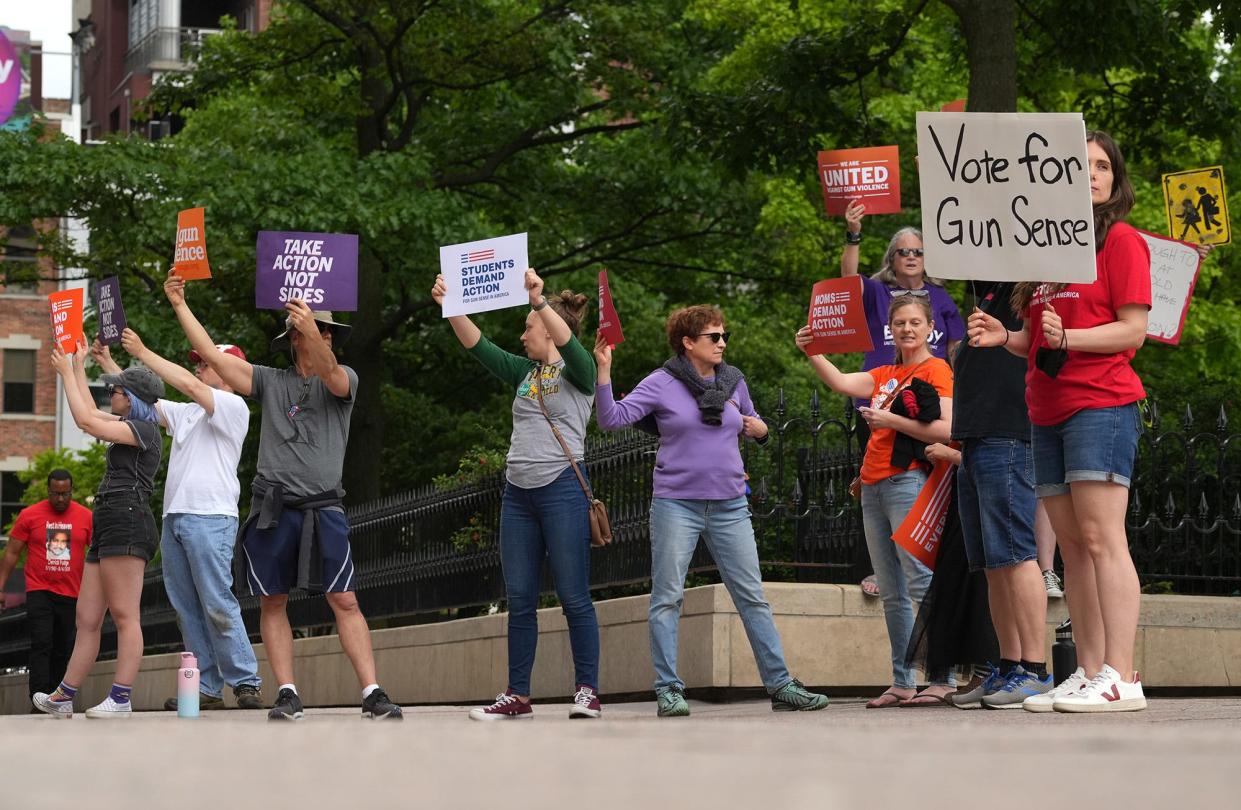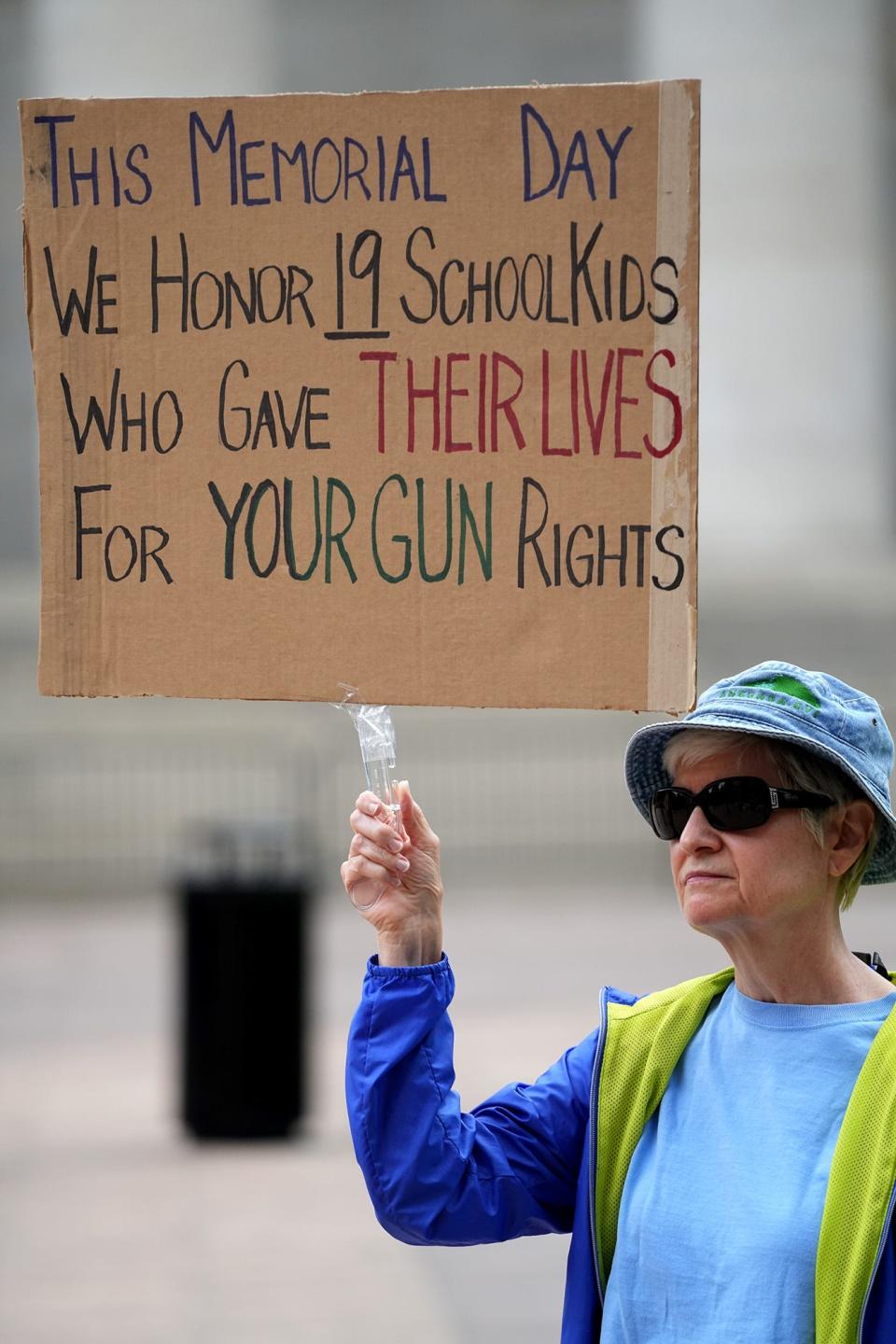Active-shooter incidents in Ohio K-12 schools and how Columbus-area schools train

Ohio has so far been spared the mass-casualty school shootings seen around the country, including the most-recent in Texas. But that doesn't mean there haven't been close calls.
About 6% of active-shooter incidents at K-12 schools since 1970 have happened in Ohio.
There have been 191 active shooter incidents at K-12 schools since 1970, according to the K-12 School Shooting Database at the Naval Postgraduate School's Center for Homeland Defense and Security, which documents every time a gun is brandished or fired, or a bullet hits school property for any reason, regardless of the number of victims, time of day, or day of week.
More: 'You never know': Ohio teachers wrestle with fear of school shootings after Uvalde
The database labels incidents as "active shooter" when the shooter killed and/or wounded victims, either targeted or random, within a school campus during a continuous episode of violence. Those incidents include shootings in courtyards and parking lots, on playgrounds and school buses and at school dances, as well as instances when someone fired at a school from off school grounds.
Of those 191 incidents over the last 52 years, a dozen have occurred in Ohio, including one in Columbus.
On Sept. 8, 2017, an 18-year-old student fired a gun inside Columbus Scioto 6-12, a school for special-needs and emotionally disturbed students in Columbus City Schools District. No one was injured. Police collected several shell casings from inside the school. At that time, there were no metal detectors or no formal search process of students as they enter the school.
Other active shooter incidents at Ohio schools since 1970:
West Liberty-Salem High School in West Liberty on Jan. 20, 2017. A 17-year-old student stormed into his school building about 45 miles northwest of Columbus and fired rounds from his shotgun through windows and walls. A teacher and a 16-year-old student were shot; both survived.
Madison High School in Middletown on Feb. 29, 2016.
Chardon High School in Chardon on Feb. 27, 2012.
SuccessTech Academy in Cleveland on Oct. 10, 2007. The shooter died by suicide.
Robert A. Taft Information Technology High School in Cincinnati on Jan. 8, 2007.
Mount Healthy North Junior High in Mount Healthy on Sept. 18, 2000.
McKinley Elementary School in Lisbon on March 23, 2000.
Wickliffe Middle School in Wickliffe on Nov. 7, 1994. A custodian was shot and killed.
Longfellow Junior High School in Lorain on Dec. 12, 1980.
Patterson Cooperative High School in Dayton on March 21, 1975.
Barberton High School in Barberton on Oct. 23, 1973.
On May 24, a shooter walked into Robb Elementary School in Uvalde, Texas and killed 19 students and two teachers.
“This tragedy once again brings to light how critical it is to focus on the safety of our school buildings here in our own community," Columbus City Schools Superintendent Talisa Dixon said in a statement. "The safety of our Columbus City Schools students, teachers, and staff remains our top priority."
Some high schools in the state's largest school district started using metal detector wand screenings this spring, and the district plans to hire 35 more "safety and security specialists" for the next school year.
Columbus City Schools has also implemented emergency operation procedures.
"Working with law enforcement agencies and first responders, we have developed and continue to revise, implement, and regularly practice emergency operation procedures," Dixon said in her statement. “Due to safety concerns, the details of these plans are not openly shared to protect our students, teachers, staff, and everyone involved."
Active shooter training

Ohio schools are required to conduct an annual emergency management test. They are also required to hold three safety drills each year, which must include an active aggressor drill and a lockdown drill, Ohio Department of Public Safety spokesman Jay Carey said in an email.
In the wake of the Uvalde, Texas, mass school shooting, Gov. Mike DeWine outlined the state’s next step for improving the safety of Ohio’s schools, which includes helping school officials evaluate potential threats and develop appropriate responses.
More: What's inside the bill to arm Ohio teachers as it heads to Gov. Mike DeWine?
“We must do more to strengthen our schools’ physical security, and we must ensure school personnel have the proper training and support to keep themselves and their students safe,” DeWine said in a May 27 statement.
Everytown for Gun Safety estimates that active shooter drills are implemented in over 95% of America's K–12 schools and are required by at least 40 states.
In Greater Columbus, Worthington and Canal Winchester Schools do ALICE (Alert, Lockdown, Inform, Counter, Evacuate) training for staff, which was developed by a former Texas police officer as a private company under Navigate360.
Westerville Schools does ALICE training for students, teachers, staff, and even interested volunteers.
ALICE training classes "provide preparation and a plan for individuals and organizations on how to more proactively handle the threat of an aggressive intruder or active shooter event," according to the company website.
Columbus City Schools follows the "Run, Hide, Fight" guidelines for drills for staff, and Upper Arlington Schools follows those guidelines for students and staff.
Whitehall Schools has not adopted an active-shooter model.
"We have simply modified it to awareness training which entails the three threat levels to our students, staff, and buildings. Those levels are perimeter safe, shelter in place, and full lockdown," Whitehall district spokesperson Ty Debevoise said in an email.
Are drills 'effective'?
While there's evidence to suggest lockdown measures can minimize the loss of life in an active-shooter situation, it's unclear if "options-based" training for an active shooter has any additional mitigating effects, several experts said.
Jaclyn Schildkraut, an associate professor of criminal justice at the State University of New York, said that prior to Uvalde, there had only been three school shootings where anyone was killed behind a locked door, and in none of those instances was it because the door lock failed.
'Is My School Next?': 'Is my school next?': Statehouse vigil remembers 21 victims of Texas school shooting
Schildkraut pointed out that the shooter in the 2005 Red Lake High School incident in Minnesota was unable to gain access to a specific room because the door was locked. And the gunman in the Marjory Stoneman Douglas High School shooting in Florida passed by classrooms he stated "looked vacant," even though numerous students and teachers were inside, Schildkraut said.
"The perpetrators typically do not have time to defeat the door locks, and instead seek individuals who are out in open areas like hallways," Schildkraut said.
As there are a wide variety of active-shooter drills, current research on such drills in schools is mixed, said Sarah Burd-Sharps, senior director of research at Everytown For Gun Safety, a nonprofit organization that advocates for gun safety and against gun violence.
"Given the nature of active-shooter incidents, it is nearly impossible to study the direct impacts of drills on safety during these horrific events," Burd-Sharps said.
Instead, most researchers focus on observing compliance with emergency procedures during drills and learn from surveys of those involved following the drills, Burd-Sharps said.
Because of the rarity of these shootings, Amanda Klinger, director of operations for the Educator's School Safety Network, said it can be hard to study if certain methods prevented violence or helped to protect students from danger.
Guns in schools
Gunfire on school property is at an all-time high, and firearms are the leading cause of death among children and teens. The United States is an outlier worldwide in this regard.
Most schools, on paper, should be difficult places for someone with a gun to avoid detection. Nearly 97% control access to their buildings during school hours. And 91% use security cameras to monitor the grounds, according to the National Center for Education Statistics.
Carrying firearms?: Ohio Senate expected to vote on bill lowering training for arming teachers
While it may be unclear what types of drills schools are running, federal data indicate that most public school students have practiced responding to some form of crisis. In the 2019-20 school year, roughly 98% of public schools had "drilled students on a lockdown procedure" and 94% had practiced evacuation drills. Similarly, 97% of public schools provided "safety procedures," which includes how to respond to an emergency.
What’s more, 96% of public schools had a written plan for an active shooter. But they hadn’t always been so widespread. In the 2009-2010 school year, 84% of public schools had a plan.
About 65% of schools have "one or more security staff present at least once a week," according to data from the federal government. Middle and high schools were more likely to have one – about 80% of institutions – compared to 54 % of elementary schools.
Student Resource Officers
Columbus City Schools has not had student resource officers since it let its contract with the Columbus Division of Police expire in June 2020.
More: As some Columbus parents seek school resource officers' return, here's what other districts do
This decision was reached largely because of public complaints that city police were overly aggressive and engaged in misconduct during racial justice protests in downtown Columbus that began May 28, three days after the murder of George Floyd Jr. by then-Minneapolis police officer Derek Chauvin.
It's a mixed bag when it comes to having SROs in other public school districts in Franklin County.
Bexley and Grandview Heights school districts don’t have SROs. Canal Winchester Schools has one SRO for the entire district while Reynoldsburg Schools has two. Olentangy Local School District and Westerville City School District each has seven SROs, while Dublin City School District has eight.
Information from USA Today was used this story. Columbus Dispatch reporter Michael Lee contributed to this report.
Megan Henry is a Columbus Dispatch K-12 education reporter. Reach her at mhenry@dispatch.com or (614) 559-1758. Follow her on Twitter
@megankhenry. Sign up for her education newsletter here.
This article originally appeared on The Columbus Dispatch: How do Columbus-area school district do active shooter training?

